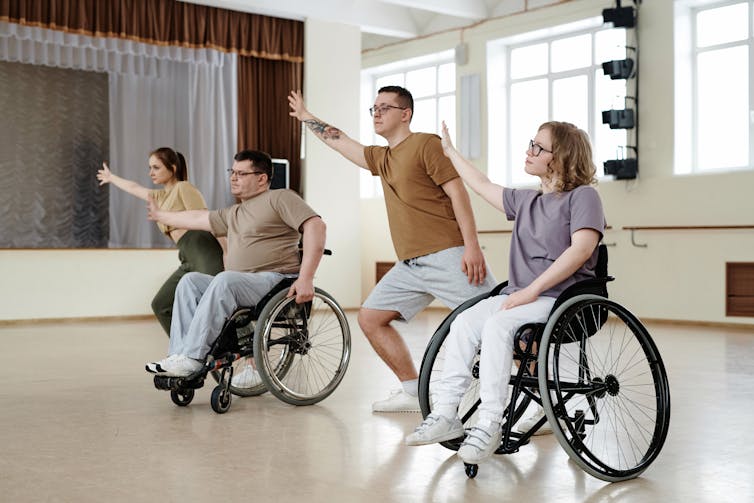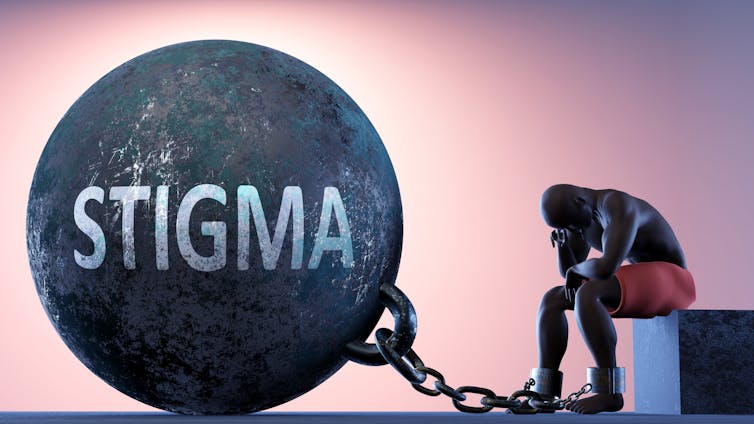
Chances are, you or someone you care about is living with persistent or chronic pain, often defined as pain that lasts for three months or more. Persistent pain is described in many ways, including continuous, consistent or recurrent (or flares).
People living with pain cannot be left in the dark to self-manage. Research has established that pain is as much a social issue as a medical issue and can be addressed with collective action.
Eight million people in Canada live with chronic pain. Often invisible, chronic pain can be associated with other chronic conditions, including arthritis, diabetes and cancer. Other common types of chronic pain include, but are not limited to, migraines, back or spinal pain.
Pain may affect people to the point that they can’t work, eat, take part in physical activity or enjoy their life. According to Health Canada, the total direct and indirect cost of chronic pain in 2019 was $38.2 billion to $40.3 billion.

(Shutterstock)
While one in five Canadians experience chronic pain, it disproportionately affects people living in poverty, those with mental health or substance use conditions, veterans, Indigenous Peoples, LGBTQ2S communities, people living in rural and remote locations, persons with disabilities, women and those working in the trades.
The reasons why some people or groups are impacted more than others appear to centre on access to care, treatment or support (both perceived and actual), as well as social determinants of health, including sex and gender-based factors.
Intersectionality recognizes that health, wellness and disease are impacted by a combination of these factors. For instance, youth living in poverty and with mental health issues in remote communities are at particular risk, and have specific needs.
While many people living with pain require pharmacological treatment, such as medication, there is growing interest in non-pharmacological approaches.
5 non-pharmacological ways to manage pain
1. Nutrition and food as medicine
Nutrition and food have an established role in preventing and treating pain and chronic disease. For instance, specific dietary patterns (like the Mediterranean diet) and foods (fatty fish, for example) are associated with reduced inflammation, chronic disease and pain.
A registered dietitian can help people living with pain access resources and solve problems while avoiding information overload. Approaches may include food substitutions, food eliminations, home-based accommodations or tools and advice on shopping and meal preparation. Dietitian services are covered by many private insurance plans as well as through additional wellness or extended health plans.
2. Movement as medicine
Well established in both western and complementary medicine, movement of the body — or lack of movement — has significant impacts on pain.

(Shutterstock)
Physical and movement therapy such as physiotherapy, massage and transcutaneous electrical nerve stimulation are common pain treatments, but they can also be used to prevent pain.
There is growing evidence that yoga and qigong — a system of meditative movement and breathing exercises — can play a role in pain management and prevention. For instance, regular qigong practice (daily for six to eight weeks) improved quality of life in several ways for people living with fibromyalgia.
Complementary treatments are not always covered by government health insurance plans, though some community programs or workplace, group and private insurance plans offer full or partial coverage.
3. Allyship and addressing stigma and bias
People living with pain can benefit from having knowledgeable allies, especially when confronted with stigma and bias.
People living with chronic pain may be stigmatized by others’ reactions. Examples provided in research include: “You look healthy, you cannot be in pain,” “You just want attention” and “It must be nice to not work.”
Several factors contribute to chronic pain-related stigma. These include intersecting determinants of health (like sex, gender, poverty, body weight and ethnicity), the lack of visible signs and symptoms of pain and the perceived subjectivity of pain assessment. Back-pain stigma and migraine stigma have been well documented.

(Shutterstock)
Social stigma can negatively affect mental health by increasing feelings of stress and shame, but a growing body of evidence suggests that physical health may also be negatively affected by stigmatization.
Traditionally and currently, people living with pain in larger bodies experience weight bias. People with pain in larger bodies commonly hear the recommendation that they should lose weight, often without adequate evidence, assessment or support. This is something many health-care providers are trying to address in the wake of the joint international consensus statement for ending the obesity stigma.
4. Support peer-to-peer initiatives
Self-management is a critical aspect of chronic pain management. It can be taught within programs with community-based approaches such as peer support, which aims to enhance self-management of chronic pain through interactions with peers who share similar conditions.
Living with chronic pain can be stressful, isolating and has been associated with increased depression and anxiety. Peer support groups offer compassion, understanding and validation by encouraging participants to share their experiences.
They also provide emotional, practical and social benefits, with stronger social connections and some reduced use of health services in addition to improved self-management skills.
5. Advocate for inclusive workplaces
Chronic pain has been shown to have a significant impact on organizational productivity and functioning including absenteeism and presenteeism. Chronic pain is a serious impediment to employee overall well-being. Pain may deplete employee mental and physical reserves, which disrupts performance and job engagement, and increases turnover as well as employee burnout.
Chronic pain also has a socioeconomic impact on employees, who may face issues like career interruptions, income loss, barriers to re-employment and overall income instability. A lack of intentional and compassionate management of employees with chronic pain is detrimental to both workplaces and employees.

(Shutterstock)
Investing in workplace interventions such as structured accommodation policies can help organizations mitigate the impact of chronic pain on employees. More proactive approaches to managing chronic pain at work include work station adjustments, flexible work arrangements and facilitation of support (like physiotherapy, massage, psychology). People living with pain can better manage flare-ups and time off, when trusted with self-pacing in the workplace.
Ideally, an employer should give employees both autonomy and support to balance their health and organizational productivity. Organizational commitment to successful and compassionate management of employee chronic pain — a “culture of caring” — allows employees to feel comfortable discussing issues with their managers and to ask for help when needed.
Online resources
There are many more resources online and in communities, including resources and supports for sexual health while living with pain.
-
People in Pain Network is a peer support organization that helps people with pain access quality care.
-
The Power Over Pain Portal provides access to a range of educational tools, self-assessments and self-management strategies for chronic pain, for use by people living with pain, their families and friends, peer support groups and health-care providers.
-
Pain Canada is made up of people living with pain and pain organizations, including advocates, researchers and clinical experts. Pain Canada provides educational tools, self-assessments and self-management strategies, and runs national Pain Awareness Week every November.
-
LivePlanBe and LivePlanBe+ are free online educational programs created with the input of people living with pain.
-
Gentle Movement @ Home offers sessions led by therapeutic movement professionals that are designed to help people with persistent pain learn to feel safe to move again. A free archive of 37 session recordings is available on Pain BC’s YouTube channel.
-
Solutions for Kids’ Pain includes evidence-based resources for better pain management for children, directed at educators, care providers and the public.
Collective action is needed to more fully address the individual and societal impacts of chronic pain, noting that not everyone experiencing chronic pain has the resources to cover the costs of treatments and supports. Given the complexity and financial impacts of chronic pain in Canada, we need to better understand and address the long-term, biophysical and social aspects of pain. At the very least, pain prevention and treatment requires information and resources that are person-centred and accessible to all.
![]()
Shannan M. Grant has received funding from Diabetes Canada, Dietitians of Canada, Medavie, and currently holds funding from Tri-Council Funding Programs, Canadian Foundation for Dietetic Research, IWK Health, Mount Saint Vincent University. She is affiliated with Mount Saint Vincent University, IWK Health, Dalhousie University, Dietitians of Canada, Diabetes Canada, People in Pain (PIPN), The Association of Nova Scotia University Teachers (ANSUT), and Dr. Lee-Baggley and Associates.
Jacquie Gahagan receives funding from CIHR, SSHRC, and RNS.
Ellen McGarity-Shipley, Hayam Bakour, and Mary Lynch do not work for, consult, own shares in or receive funding from any company or organisation that would benefit from this article, and have disclosed no relevant affiliations beyond their academic appointment.























